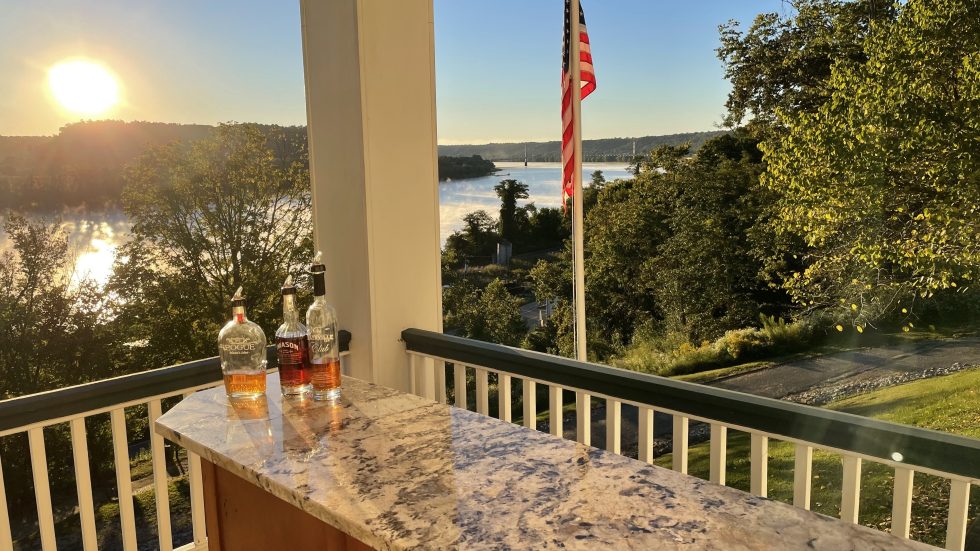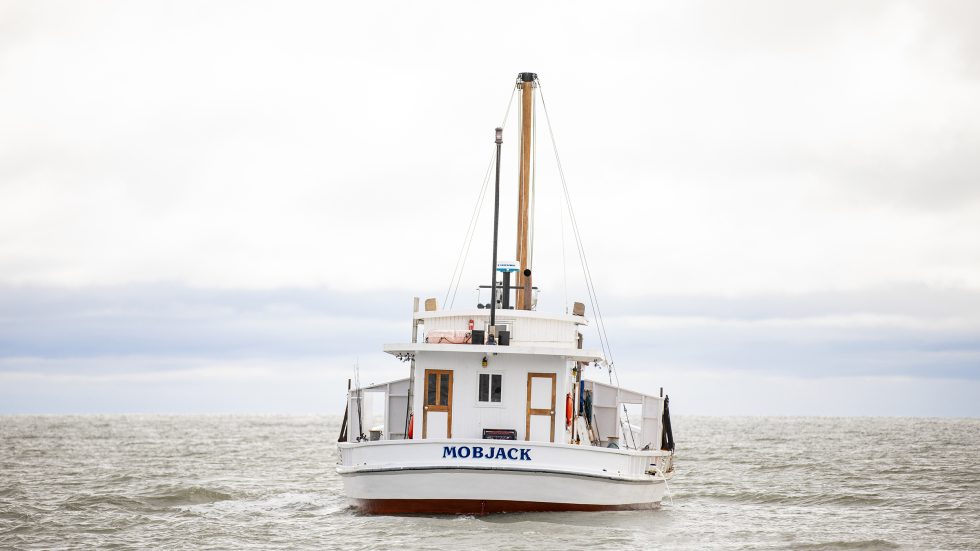Maybe the simplest way to understand what it is like to race nitro-methane/alcohol Top Fuel drag boats 1,000 feet in 3.396 seconds at more than 250 mph is to take a quote from the Lucas Oil Marine Stadium website: “There is only one word for it — insanity.”
Other folks put it a bit differently but no less emphatically. The Southern Drag Boat Association calls it “The most exciting form of motor sports on the planet!”
While there are other drag boat races held all over the country, the only facility designed and built just for this purpose is Lake Lucas at the Lucas Oil Speedway in Wheatland, Mo., just south of the Lake of the Ozarks. The highly regarded dirt track there has a full racing schedule, but as of now, the drag boats run on the lake twice a year. At other times the 3,800-foot-long, 400-foot-wide, 8-foot-deep lake is used for other events.
Racing on the lake started in 2011 as an additional draw to the property and as part of the Lucas Oil Drag Boat Racing Series. Unlike other drag boat sites on lakes and rivers, there are many features that make this a premier venue. To protect the spectators and the racers, a 12-foot chain link catch fence runs down both sides of the lake and across the end. Not only is there no other boat traffic to churn up the water, but each side of the lake has heavy rip rap protection that quickly dissipates waves. To lessen the down time between heats, there is a wide in-ramp by the starting line and out-ramps on both sides of the finish line. For boats that stall during their heat, there are two emergency cutouts and ramps along the right side. One is about 1/3 of the way down the track, and the other is about 2/3 down.
Spectators have several options for watching the races. There are three large aluminum sets of bleachers along the left side and large 40- by 100-foot shade tents along the course. Beyond the finish line, there is an area for EZ-up canopies and folding chairs. For folks who show up in their RVs, there is a campground overlooking the right side of the lake, which offers the advantage of watching the races sitting next to your RV.
Then, for those who want to cool off and take a break from the action, the Show Me Beach and swimming area is beyond the finish line and, once again, guarded by a catch fence. The area also has volleyball courts, tether ball and horseshoe pits. It is open for all races except during the ultra high-powered Pro events.
The lake is adjacent to the 3/8-mile semi-bank clay oval dirt track that opened in 2006. A tower complex there has 21 luxury suites. Other amenities include a huge vendor midway, a full service nightclub called the Diamond Bar and a concession stand with a widely diverse menu. For fun, there is a go kart track and fishing pond.
Stay Classy, Racers
Drag boat racing shares much in common with regular drag racing. There are numerous classes and divisions with the fastest being the Pro Class Top Fuel Hydro, where boats run on a mixture of nitro-methane (65 percent minimum) and alcohol (pure methanol). Engines are limited to 500 cubic inches but develop up to 8,000 horsepower and spin twin, counter-rotating props in the neighborhood of 20,000 rpms while throwing up huge rooster tails Their hulls are either watercraft or outrigger style. Due to the incredible speeds, they only race 1,000 feet and not a full quarter mile.
From that class on down, elapsed times increase and speeds diminish — but not the excitement. The Top Alcohol Flatbottoms are considered the funny cars of the drag boat world. They have hulls that are relatively flat with a maximum length of 16 feet and generate speeds over 160 mph.
All the rest of the classes are indexed as to elapsed time. If a class is indexed, for instance, between 8.0 and 8.999 seconds, the boat is disqualified if it runs quicker than 8.0. Most of the boats at this point are somewhat de-tuned so they stay within the parameters. It is not uncommon for a boat’s pit crew to tell a racer who is well ahead to slow down in order to stay within the limits for that class.
One of the most competitive classes is the Pro Modified. Indexed at between 7.0 and 7.999, these have hydro-style hulls and v-drives. Fractions of a second usually determine the winners, who hover just slightly more than 7.0 seconds. Reaction time at the start is crucial.
The Sportsman Class boats run from 8.0 to 11.99 seconds. Beyond that, the Bracket Class includes a number of different categories like the River Racers that range from full fledged racing boats to heats for family or fishing boats that run 12 seconds and over.
Riders 18 years old and older can enter the PWC 1 category, and youngsters who want to compete and learn more about the sport can do so in the PWC 2 division. These racers learn to judge the start clock, their mph and elapsed time, as well as hone driving skills. These run in the 50- to 60-mph range for the quarter mile.
Another fan favorite category, although not drag boats, are the Crackerbox Pro Inboard Sprint Boats that race in an oval. Their history dates back in time to when a driver took along a mechanic to keep the engine running long enough to finish the race. Described as “the most exciting ride of your life,” these two-seaters are the Sprint cars of the water. Both racers sit in seats at the stern, looking over the motors mounted forward.
Mark Your Calendars
At present, there are four boat races a year at Lake Lucas. Two are drags and two are not. The biggest event of the year is the Diamond Drag Boat Nationals over Labor Day weekend. About 15,000 spectators assemble for this three-day competition. Friday is for Open Competitor test and time trials. Saturday has qualifying heats. The final eliminations are on Sunday.
In June, the track hosts the three-day John Hass Memorial Drag Boat Classic. A popular Show and Shine event at this race lets fans get close to the boats and drivers. An outdoor concert tops things off on Saturday night.
One non-drag event is part of the US Formula I Powerboat Tour for tunnel boats. They go from zero to 100 mph in less than 3.5 seconds and pull a lot of Gs going through the turns. Another is the National Boat Racing Association (NBRA) competition at the end of June, with stock and modified outboard hydroplanes and runabouts.
Dedicated gearheads, people who thrill to the incredible noise of engines and folks who love the excitement of motor sport racing love the Lucas Oil Marine Stadium. So do other folks who truly appreciate what men can do to create boats that seem to fly over the water like they were launched from a giant slingshot.
For More Information on Lucas Oil Marine Stadium and the Lucas Oil Drag Boat Racing Series, visit www.lucasoilspeedway.com and www.lucasoildragboats.com.



